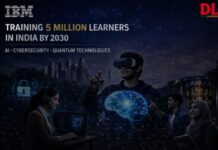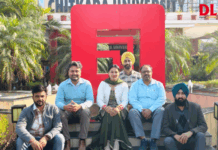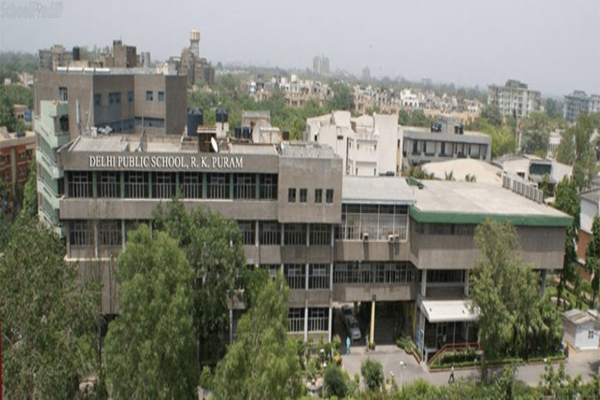What are the factors that shape the effective adoption of innovations in education technologies to particular local situations? How to scale-up promising innovations in ICT in education from a near erfect ‘pilot’ environment in which they were conceived to the striking realities in the vast majority of schools? Are teachers’ capabilities and effective pedagogy the most crucial contextual variables that shape the effectiveness of an innovation? Questions abound, so does the efforts to find out viable solutions to the many
challenges that confront a seamless integration of ICTs in education. The Digital Learning Asia Conference and Exhibition (6-8 February, 2007) at Putrajaya,
Malaysia, a part of eAsia 2007 Conference, is an initiative towards providing a platform for collaborative learning, knowledge networking and strategising among innovators and practitioners in ICT in education in schools, universities and lifelong learning for communities. The conference, second in the series of regional forums organised by CSDMS is being hosted by the Ministry of Energy, Water and Communications, Malaysia and is supported by key government organisations and International thought leaders in Asia and outside.While most countries in Asia are struggling to close the existing divides – digital andeducational, countries that have adopted ICT-enabled education are evaluating their interventions and strategising for the most effective processes for a sustainable ICT invention for improving the quality and reach in ducation. The Digital Learning conference is aimed at providing an opportunity to stakeholders to share practical experience of ICT use in education in geographically and culturally diverse regions. The knowledge networking opportunities provided through structured sessions and discussions, and informal networking spaces in the conference, are aimed at bringing businesses and the knowledge base together and connecting the stakeholders to catalyse
collaboration and partnerships that are mutually beneficial. While innovators will showcase their products and practices and get a informed feedback from the practitioners and users of their products, donors and investors may get to look at some of the programmes and researches that are currently in practice and require support for deepening the process, field testing of experiments and up-scaling and expansion of operations. In this special issue on the learning opportunities in Digital Asia, we have covered some experiments and researches in this sector. The conference is an extension of the knowledge sharing and networking space that we provide though this publication. While in this issue we continue our focus on Asian countries, Malaysia in particular, as the Digital Learning magazine and Digital Learning Asia 2007 Conference takes a step further in bridging the knowledge gap between decision-makers and practitioners and promotes dialogues, new alliances, inter-personal networks, and cross-sectoral links so that “useful knowledge” is shared and channeled to develop “best management practices” and practical decision support in ICT in education. We invite you to join and expand this knowledge network. Happy Reading!
Preparing for a Knowledge Network
world
UNESCO launches teacher-training programme in Africa
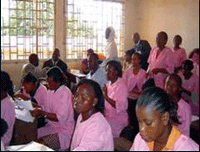 UNESCO has launched a high-priority ‘Initiative on Teacher Training’ in sub-Saharan Africa. This initiative will assist the continent’s 46 sub-Saharan countries in restructuring national teacher policies and teacher education.
UNESCO has launched a high-priority ‘Initiative on Teacher Training’ in sub-Saharan Africa. This initiative will assist the continent’s 46 sub-Saharan countries in restructuring national teacher policies and teacher education.
The main of the training programme is to improve the quality of teaching across the continent. In this initiative, 17 countries are participating, including Angola, Burkina Faso, Burundi, Cape Verde, Central African Republic, Chad, Congo, Democratic Republic of the Congo, Ethiopia, Ghana, Guinea, Madagascar, Niger, Nigeria, Sierra Leone, United Republic of Tanzania, and Zambia. TTISSA will link and create synergies from the other core Initiatives, the Literacy Initiative for Empowerment (LIFE) and the Global Initiative on Education and HIV and AIDS (EDUCAIDS).
British Council launches training programme in UAE schools
British Council has launched the project, which is aimed to introduce effective use of ICT in schools in UAE. British Council is to bring together teachers and GGC & UK policymakers to introduce ICT.
The British Council has completed its first teacher-training programme for UAE national schools for vision impaired. British Council launched this training programme with the support of Ministries of Education. British Council has collaborated with UK education consultants to provide training on ICT tools for education, including e-languages and Global Gateway. The British Council is also working on the ICT in Schools project in co-operation with all the Education Zones in the UAE.
The ICT training workshop is aimed to increase the skills of teachers in the use of ICT in the classroom and to develop the level of confidence in the use of online tools for international collaboration in education.
Australia makes easy e-learning for people
The Department of Industry, Tourism and Resources (DITR) of Australia is making e-Learning more impressive for staff members of Australia.
DITR is planning to implement e-learning this year for 300 staff in its e-business division. The system will include office, management and IT employees. DITR has asked the government for the supply, implementation and maintenance of an online training and education system, as well as an online reference library and help material. The e-learning system would be accessible at work and from home, and deliver reports on its usage.
e-Education Development gets a boost
Azure Technologies and the Department of Technical Education signed a contract agreement worth $2.4 million, marking a new milestone in e-education development in Brunei.
The agreement was inked for the supply, reengineering, analysis, design, delivery, installation, integration, testing, deployment; training, commissioning and maintenance of software and hardware for the implementation of an integrated Web-based technical and vocational education student information system for the Department of Technical Education at the Ministry of Education.
National Development Plans boosts ICT in Irish schools
 Schools of Ireland will receive a technology boost under the National Development Plan 2007-2013. The new investment is designed to develop an e-learning culture in schools.
Schools of Ireland will receive a technology boost under the National Development Plan 2007-2013. The new investment is designed to develop an e-learning culture in schools.
The Ministry of Education will follow this plan by implementing ICT skills into schools. The Government is planning to invest EUR25 million to buy hardware for teaching new and revised technology subjects. Under that plan approximately 500 schools will receive funding, which would be used to provide hardware such as PCs, laptops, printers, digital scanners and data projectors. The National Centre for Technology in Education (NCTE) has joined with the Union of Students in Ireland and the Combined Higher Education Software Trust in signing an agreement with Microsoft to offer specially-priced software to every primary, second and third level student in the country. The Software4Students programme will make discounts on all Microsoft software available to 917,000 students.
Patent Office to re-examine Blackboard learning patent
The United States patent office has ordered a re-examination of an “e-learning” patent owned by Blackboard Inc. The Software Freedom Law Center (SFLC) had asked for the review on behalf of three open source software projects Sakai, Moodle and Atutor.
 The Patent Office said that prior art cited by the SFLC raised questions about the patent. It was reported earlier that Blackboard had taken legal action against Desire2Learn Inc. This firm has also asked the patent office to re-examine Blackboard’s patent. The re-examination will take two years.
The Patent Office said that prior art cited by the SFLC raised questions about the patent. It was reported earlier that Blackboard had taken legal action against Desire2Learn Inc. This firm has also asked the patent office to re-examine Blackboard’s patent. The re-examination will take two years.
e-Academy for companies from MyKnowledgeMap MyKnowledgeMap (MKM), United Kingdom’s leading supplier of infrastructure systems for national skill academies has introduced a version of its e-Academy system enabling companies to manage staff skills and development needs ranging from day-to-day productivity to discovering and achieving relevant qualifications.
Company Academy supports the management of Internal courses. Designed to run over an Intranet, or provided as a hosted solution, it can be provided as an empty infrastructure, ready for an organisation to populate with its own material. Alternatively, it is available with various content packs and can be fully branded to complement the user organisation’s house style.
9.7 million dollar invested in tertiary education
The New Zealand government is investing $9.7 million in 11 projects fostering innovation in tertiary education. The new projects offered funding in the 2007-08 financial year are run by universities or institutes of technology and polytechnics. The projects include development of a Biomolecular Interaction Centre in Canterbury, implementation of e-learning guidelines across the tertiary sector, and establishment of a National Energy Research Institute. The new funding comes on top of the $30 million previously allocated to 34 projects through the TEC’s Innovation and Development Fund (IDF) over the past three years.
New software will help children design their own games and aid learning
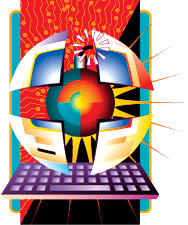 Pioneering software that enables children to design their own computer games could significantly improve the teaching of literacy, design and ICT skills in schools. A new project at Heriot-Watt University in United Kingdom aims to produce “Adventure Author”The objective is to show thatcomputer games, as well as being fun, offer a great way of motivating pupils to learn. They can develop their reativity, and in many cases, generate better results than conventional teaching methods. The 27-month research project “Supporting Creativity in Computer Game Authoring” is due to run untilSeptember 2008. Adventure Author will allow 10-14 year olds to design and build 3D, interactive fantasybased computer games, which will involve developing characters, writing dialogue, plot-structuring and visual design, as well as dealing with technical programming issues and testing/evaluating the games.
Pioneering software that enables children to design their own computer games could significantly improve the teaching of literacy, design and ICT skills in schools. A new project at Heriot-Watt University in United Kingdom aims to produce “Adventure Author”The objective is to show thatcomputer games, as well as being fun, offer a great way of motivating pupils to learn. They can develop their reativity, and in many cases, generate better results than conventional teaching methods. The 27-month research project “Supporting Creativity in Computer Game Authoring” is due to run untilSeptember 2008. Adventure Author will allow 10-14 year olds to design and build 3D, interactive fantasybased computer games, which will involve developing characters, writing dialogue, plot-structuring and visual design, as well as dealing with technical programming issues and testing/evaluating the games.
Cisco targets emerging communication markets
Cisco announced that it will present two Cisco TelePresence systems each to the governments of five nations in the emerging markets as a means to improve communications andcollaboration within and among those countries by harnessing the ultra-high quality, two-way video and audio capabilities of the TelePresence solution. The participating countries are Egypt, Jordan, Lebanon, Turkey and the United Arab Emirates. Cisco expects to have the TelePresence systems in all five countries within six months. Cisco estimates that its total contribution will be approximately $6 million. This will include the TelePresence systems, their planning, design and installation and a year’s worth of support services costs.
Study finds open source key to European ICT competitiveness
A new study on the economic impact of Free/Libre Open Source Software (FLOSS) on the European information and communication technologies (ICT) sector has found that it could increase Europe’s competitiveness. ’Given Europe’s historically lower ability to create new software businesses compared to the US, due to restricted venture capital and risk tolerance, the high share of European FLOSS developers provides a unique opportunity to create new software businesses and reach towards the Lisbon goals of making Europe the most competitive knowledge economy by 2010,’ states the report, which was requested by the European Commission’s Enterprise DG
asia
Vietnam’s first Mobile Internet library launched
Vietnam’s first mobile Internet library has been launched to serve rural and suburban areas.The library will have a multimedia room with a computer network, CD-ROMs, 1,500 scientific documentaries, special documentaries for the blind, and others. Korea based LG Electronics Corp., has granted US$85,000 to the library. The library is especially meant to serve people, youth without any charges.
Computers with home-grown CPU debut on Chinese market
The first batch of 80 computers powered by home-grown Chinese CPUs are undergoing user tests,The computer, which uses a Linux operating system, comes with a 40-gigabyte hard drive and 256 megabytes of memory. It costs 1,599 yuan (about 200 U.S. dollars), and users have to buy the monitor, keyboard and mouse separately.
 China started CPU research and development in 2001, and the first chip, Godson I, came out in September 2002, bringing the country’s microprocessor industry a step closer to the world leading manufacturers in the United States and Japan. China has since developed three more generations of the Godsongenerations of the Godson — Godson II B, Godson II C and Godson II E. The latter models triple the computing speed of the previous ones.
China started CPU research and development in 2001, and the first chip, Godson I, came out in September 2002, bringing the country’s microprocessor industry a step closer to the world leading manufacturers in the United States and Japan. China has since developed three more generations of the Godsongenerations of the Godson — Godson II B, Godson II C and Godson II E. The latter models triple the computing speed of the previous ones.
US commits $100m for Pak education
Pakistan and the US announced an elaborate programme to promote education at all levels in Pakistan with the US committing another $100 million in 2007 in addition to $200 million already provided. The seven points to expand educational opportunities for the people of Pakistan include: teacher training programmes; promotion of teacher, student and faculty exchanges; improvement of secondary-level science and math studies; administrative capacitybuilding, including school infrastructure; vocational/ workforce education and training to meet Pakistan’s labor needs; public/private sector partnerships; and the establishment of linkages between the higher education academic and research institutions of ur two countries and training of Pakistani academics in US institutions.
Majority of Sri Lanka’s teachers
lack computer literacy! The Ministry of Education says a new government survey shows that only a third of the teachers or (32.5 percent) in Sri Lanka are computer literate. Goverment hopes to establish 35 centers that will teach ICT and English literacy to teachers. The preliminary report of the Census on Computer Literacy of Teachers conducted among, government schools approved private schools and Pirivenas shows that Sri Lanka’s computer literacy among teachers varying within 30 to 40 percent across districts. Ministry of Education say literacy in English is also a factor contributing to teachers’ literacy in ICT where only 53.7 percent of teachers in schools and Pirivenas or temple based schools have the ability to read and understand documents written in English. Of the 200,000 teachers, 28 percent are graduates, but they are not computer literate. From the facilities related to ICT, only 76 percent of schools and Pirivenas have electricity, 26.2 percent havetelecommunication facilities and less than ten percent have internet facilities. The ministry hasalready given 100 computer laboratories that run on solar energyto schools without electricity, and 500 are scheduled to be built in 2007.
MALAYSIA
Southern academic centres network to share resources
Viet Nam National University in HCM City and the city People’ s Committee are working on a project to link up academic institutions in the south for the purpose of improving information and resource exchange. The Malaysia-based Multimedia University and the FSBM group will support the project Development of Integrated ICT Infrastructure among Universities, Colleges, Research Institutions and Academic Centres in the South, whose feasibility study is estimated to cost US$3 million.
MDeC promotes graduates as technopreneurs
Multimedia Development Corporation (MDeC) is promoting the job of a technopreneur as a career choice among the local information and communication technology (ICT) graduates. This is because Malaysia still lacks technopreneurs coming to the mainstream business environment. The move is part of MDeC’s effort to encourage local ICT graduates to get involved in the ICT business field.
Egypt seeks Malaysian firms’ involvement in ICT development
Egypt is seeking involvement of Malaysian companies in its large information communication technology (ICT) development projects. Many Egyptian firms had investments in enterprise resource planning (ERP), e-government and automation projects in several
African nations and other Arab countries, urging Malaysian firms to engage in knowledge and know-how transfer.
National Education Blueprint 2006-2010
The National Education Blueprint 2006-2010 outlines six strategies to make national schools premier schools and the people’s preferred choice. The blueprint, which was launched by Prime Minister Datuk Seri Abdullah Ahmad Badawi at the Putrajaya International Convention Centre, aims to develop the nation’s people through education irrespective of race or socio-economic background. Its main agenda is to develop national schools as the mainstream of education with the majority of students attending them.The blueprint, which covers educational development over the same period as the Ninth Malaysia Plan (2006-2010), encompasses three main aspects
Malaysian Smart Portals Expanding Malaysian Study Opportunities
Malaysia, located in South East Asia, is a testimony to the world of what it is able to offer academically. Malaysia has grown tremendously in all spheres of life and especially in education sector, it has become a more developed country over last two decades. Considering the pace of the information that would be required by the learning and teaching community in Malaysia, a number of conducive and interactive learning environments in the look of smart, comprehensive e-learning portals have been actively catering the needs of both the learning and teaching community.
Which college is the best? Am I doing the right course? Which university is tops for engineering programmes?” Lingering questions like these are enough to cause sleepless nights and loss of appetite. With over 650 private higher educational institutions in Malaysia, choosing one to go to is never an easy task. Study Malaysia Online sited at http://www.StudyMalaysia.com is a comprehensive and informative educational website that complements well to the efforts carried out by the Malaysian government to promote study opportunities in Malaysia. It provides comprehensive information on various higher educational institutions (private colleges, private universities, public universities and polytechnics), the courses they offer, education financing, updated news on education, significant individuals in the education industry as well as other valuable information on study opportunities for local and foreign students.

Students can obtain the very latest and up-to-date information about the various private schools, colleges, universities, public universities, polytechnics and professional bodies in Malaysia, as well as check out the courses/programmes offered by these schools/higher institutions of learning. Other pertinent sections in the website are profiles of Malaysian institutions, Student's Hotspots which include Event Calendar, Career Guide, On Focus, News, Scholarship, Students' Views and Study Forum.
StudyMalaysia.com is the site strictly dedicated to Malaysian approved educational institutions, which promotes the Malaysian Brand to the world education market.My StudyMalaysia gives one access to a more personalised education with additional features to make this site your valuable resource for educational information.
KakakTua.com is an e-learning web portal developed to help students revise for their exams in a fun and effective manner via the Internet. The aim is to help students find an enjoyable method of learning and at the same time achieve top study grades.
At the core of the site is the Learning Centre, where students can practise thousands and thousands of revision questions and even submit essays for marking by our online teachers. The customised navigation system allows students to revise according to topics, focusing on specific weak areas and levels or practise simulated examination papers. It has developed an intelligent assessment system, which not only gives immediate feedback to the student, just like a classroom environment, but also allows students to track their performance on every subject. This helps students to focus on the subjects or topics, which need more improvement, thus revising more effectively. Parents and teachers can also use this tool to monitor their child/student's improvement in each subject.
The Malaysian Students Network Community / Jalinan Komuniti Pelajar Malaysia (http://www.student. com.my/) also keeps the goal to provide an interactive and integrated Smart Portal: one-stop center for Malaysian students.
People&rsquo:s Access to Knowledge can Transform India
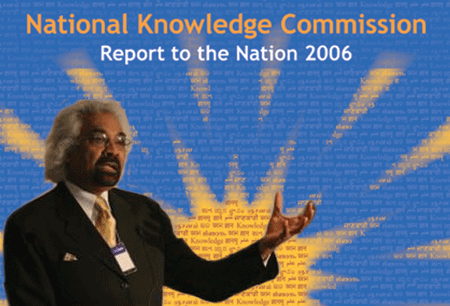
A national drive to ensure access to knowledge and learning can transform India’s potential for development, lift young Indians to new levels of understanding and competence, and make India one of the leading knowledge societies in the world. This is the central affirmation of the National Knowledge Commission in its 2006 Report to the Nation, released recently. The Report was presented to the Prime Minister, Manmohan Singh, by Commission Chairman Sam Pitroda. This is also marked by the Prime Minister’s inauguration of two national knowledge portals, opening public access to knowledge and ideas on the issues of Water and Energy.
Appointed by the Prime Minister in October 2005 with a three-year mandate, the Commission is assigned to prepare a blueprint for radical improvement of knowledge access, knowledge creation and application, by and for the Indian people. The assignment includes the generation of practical plans for comprehensive improvement of education standards and opportunities at all levels and notably the uplift of vocational knowledge and skills. The Commi-ssion’s initiatives focus especially on youth and children, who comprise 54 per cent of India’s people, and are its vast human resource of talent and potential competence to meet both national and international needs.
The NKC recommendations are wide ranging, taking in their sweep higher education, vocational training, libraries, e-governance, right to education and translations. Each of the recommendations has been crafted to achieve the objective of tapping into India’s ‘enormous’ reservoir of knowledge and prepare the country for the challenges of the 21st century.
According to the Chicago-based chairman of the Commission, ‘While making the recommendations we have been guided by how knowledge will impact the lives of ordinary hardworking people of India. We are conscious that knowledge is about farmers having access to accurate information about water resources, land quality and fertilisers, students having access to schools and colleges of high quality and good libraries, scientists having access to well equipped modern laboratories, industry having access to skilled workforce and people generally having right to information and good governance.’The Report to the Nation highlights key areas where change could significantly improve people’s inclusion and capability in existing and new fields of knowledge use. This would entail reform in education, learning processes, governance, enrichment of knowledge institutions like libraries and centres of research and learning.
A major thrust is proposed in translation across all Indian languages to further knowledge creation and information dissemination. Access to new technologies and services for information provision and the transfer of knowledge is a priority. The commission has already submitted wide-ranging recommendations for action to the Prime Minister, to which the report has now been made public.
Based on a year-long process of consultations with experts and representatives of government, parliament, academia, industry, civil society and the media, the recommendations are based on open and intensive discussion to identify priorities, concerns, and needed action. The Commission Chairman Pitroda expressed the hope that the Report will generate further discussion and debate, so that public participation enriches the Commission’s efforts.
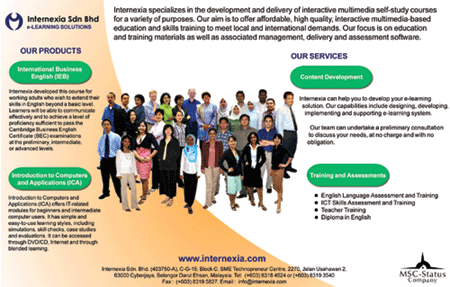
The inauguration of the two national web portals on Water and Energy marks the Commission’s bid to enhance public access to information and knowledge on these two critical development issues. The promotion of web portals on Internet is just one of the Commission’s initiatives to open up knowledge sources and resources for public use.
Evaulating the Web Accessibility of World&rsquo:s Top Ten Universities&rsquo: Home Page
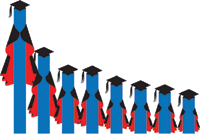 While last numbers of colleges Universities and business organisations around the world are adopting e-learning for learners, the website accessibility is becoming of critical importance. This article is the result of evaluating the web accessibility of the World's Top Ten Universities' home pages with the World Wide Web Consortium's (W3C) Web Content Accessibility Guidelines (WCAG) 1.0. The analysia of the source code of the individual home page of each selected university was conducted using “Bobby,” a Web-based analysis tool designed to help determine page features that May be inaccessible for students with disabilities. Based on these evaluations, half of the 2006 World's Top Ten Universities' Home Page or five universities of the 2006 Top Ten Universities did not meet all WCAG 1.0, Conformance criteria. There are three universities of the 2006 World's Top Ten Universities' Home Page that meet WCAG 1.0.
While last numbers of colleges Universities and business organisations around the world are adopting e-learning for learners, the website accessibility is becoming of critical importance. This article is the result of evaluating the web accessibility of the World's Top Ten Universities' home pages with the World Wide Web Consortium's (W3C) Web Content Accessibility Guidelines (WCAG) 1.0. The analysia of the source code of the individual home page of each selected university was conducted using “Bobby,” a Web-based analysis tool designed to help determine page features that May be inaccessible for students with disabilities. Based on these evaluations, half of the 2006 World's Top Ten Universities' Home Page or five universities of the 2006 Top Ten Universities did not meet all WCAG 1.0, Conformance criteria. There are three universities of the 2006 World's Top Ten Universities' Home Page that meet WCAG 1.0.
The importance of web accessibility for e-learning is an issue that is gaining incresing attention. There are two main reasons supporting the need of evaluating the 2006 World's Top Ten Universities' Home Page. First is, there is no clear database or collection of e-learning web sites in the global rank. However, the Times Higher Education Supplement has published World University Rankings annually from 2004 to 2006. The third edition was published in October, 2006. The World University Rankings report came from a survey, which focused on many aspects such as research, teaching and international expectations of universities around the world. The second reason is the 2006 World's Top Ten Universities are in countries that declared legislation related to web accessibility. Seven of the 2006 World's Top Ten Universities are in the United State (U.S.) and three universities are in United Kingdom (U.K.). Currently both U.S. and U.K. have policies involving web accessibility.
Using 'Bobby' to evaluate web accessibility
This study focuses on evaluating conformance to accessibility standards based on the Web Content Accessibility Guidelines (WCAG) 1.0 by the automated tools, Bobby. The reason for selecting “Bobby” as the only evaluation tool for this study is because Bobby is a free web accessibility testing tool designed to generate reports of accessibility and encourage compliance with existing accessibility guidelines, including Section 508 of the U.S. Rehabilitation Act and the WCAG 1.0. The usefulness of Bobby confirmed that it reduced time for automatic testing of 14 guidelines, which include 65 checkpoints of WCAG 1.0. In addition, Bobby is free from CAST, the Center for Applied Special Technology. Bobby has been recommended for web developers as a first step to ensure accessible Web page design. Bobby might be used only as a tool for checking completion of three levels of conformance, Priority 1 or “A”, Priority 2 or “AA” and Priority 3 “AAA”.
The evaluation has focussed on determining the strong inaccessible features of the selected web sites of World's Top Ten Universities.
Ranking the web accessibility of university websites
The results discussed in this report are based on an evaluation conducted on October 30, 2006.The home pages of selected universities May have changed since that time. The results of the evaluation can be categorised into four groups as is explained in the figure below.

Cambridge University is the only university whose home page reached the Conformance Level “AAA”. Oxford University is the only university whose home page reached the Conformance Level “AA”. There are three universities, Massachusetts Institute of Technology, Yale University and Stanford University, whose home pages reached the Conformance Level “A”
The first group is the home page that reached the Conformance Level “AAA”: all Priority 1, 2, and 3 checkpoints were satisfied. Cambridge University is the only university in the first group. The second group was the home page that reached the Conformance Level “AA”: all Priority 1 and 2 checkpoints were satisfied. Oxford University is also the only university in the second group. The third group is the home page that reached the Conformance Level “A”: all Priority 1 checkpoints are satisfied. There are three universities in the third group, Massachusetts Institute of Technology, Yale University and Stanford University. The fourth group is the home page that did not reached the Conformance criteria. There are five universities in the fourth group, Harvard University, California Institute of Technology, University of California, Berkeley, Imperial College London and Princeton University.
Common obstacles to web accessibility
Based on the levels of conformance of WCAG 1.0: Priority 1 (A), 2 (AA), and 3 (AAA), the top three mistakes that occurred at each level are discussed below.
The most common mistake for Conformance Level “A” is '1.1 lack of alternative text for all images' on the home pages of both Harvard University and California Institute of Technology. The home page of Princeton University also had similar errors – '12.4: lack of alternative text for all image-type buttons in forms'. The home page of Imperial College London has different points of mistakes regarding the frames: '6.2: each FRAME must reference an HTML file and 12.1: give each frame a title'.
The most common mistake for Conformance Level “AA” includes two checkpoints that are '3.4: use relative sizing and positioning' and '9.3: make sure that event handlers do not require use of a mouse' on the home pages of six universities. The error 3.4: occurred on home pages of Massachusetts Institute of Technology, Yale University, Harvard University, California Institute of Technology, University of California, Berkeley and Imperial College London. The error 9.3: occurred on home pages of Yale University, Stanford University, Harvard University, California Institute of Technology, University of California, Berkeley and Princeton University.
The second common mistake for Conformance Level “AA” include two checkpoints that were '12.4: explicitly associated with controls and their labels with the LABEL element using relative sizing and positioning' and '13.1: Do not use the same link phrase more than once when the links point to different URLs.' on the home pages of five universities. The mistake of 13.1 occurred on home pages of five universities: Harvard University, Yale University, Stanford University, University of California, Berkeley and Imperial College London. The mistake of '12.4: explicitly associate form controls and their labels with the LABEL element used relative sizing and positioning' occurred on home pages of five universities: Yale University, Stanford University, California Institute of Technology, University of California, Berkeley and Princeton University.
The third common mistake for Conformance Level “AAA” is '5.5: provide a summary for tables' on the home pages of five universities. The error 5.5: occurred on home pages of Massachusetts Institute of Technology, Yale University, Harvard University, California Institute of Technology and Imperial College London.
In this new 21st century, large number of college's universities and business organisation around the world are to adopting e-learning for all learners which included students with disabilities. Thus, the standard for e-learning must consider web accessibility issues. This experimental study assumed that the visitors to all universities web sites are primarily the students including the students with disabilities. It also assumes that the home page of universities should be the representative of the universities' web sites. The results from this study validates that the World's Top Ten Universities' Home Pages analysed by Bobby show that the universities from U.K., the Cambridge University easily earned Conformance “AAA”, Oxford University earned Conformance “AA”. Cambridge University is the only university in 2006 that is ranked at the top in the world by peer review score of 100% (O'Leary, 2006). The other three universities from U.S., Massachusetts Institute of Technology, Yale University and Stanford University earned Conformance “A” from the validation.
For future studies, the researcher would like to recommend that the evaluation might gather better result quality by combination of the automatic testing of source codes such as Bobby and conducting usability testing by students with disabilities. The combination of testing approach May bring about a clearer understanding of how people with disabilities interact with the web pages, using assistive technologies. The results of this study indicate that any websites that satisfied check points of Priority 1, 2, and 3 might not be very meaningful or significant. The websites have to become more accessible for anyone, anywhere, at any time.
Suggested resources
For up-to-date information on web accessibility – Web Accessibility Initiative (WAI) at http://www.w3.org/WAI/. For universities' web developers interested in employ techniques of design accessible web content can learn from the Quick Tips to Make Accessible Web Sites by Henry & Popolizio (2006). The Quick Tips on a vinyl business-card-sized reference card, in large print, and in Braille are available at no charge, up to 500 cards. ![]()
Web Content Accessibility Guidelines version 1.0
|
Towards a Goal of Global Excellence
In an environment characterized by rapid advance in ICT, globalization, liberalization, and greater reliance on knowledge for value creation, Malaysia has planned to leapfrog into the post-industrial age by leveraging ICT as a strategic lever for national development and global positioning. Malaysia had achieved its independence in 1957. Since then the country has implemented nine five-year economic development plans. Believing in the philosophy that economic development should not be left entirely to market forces, Malaysia had focused on the eradication of poverty, restructuring of society, equitable growth and investment in human capital as its key national goals.
The New Economic Policy (NEP), 1970–1990, and the National Development Policy (NDP), 1991–2000, formed the bench-mark of all policy and plans for the country. In 1991, Malaysia launched a program called “Vision 2020’’, which laid out a plan to build a fully developed, knowledge-rich Malaysian society by the year 2020 through the development of the ICT sector and the use of ICT to increase global competitiveness. Lessons from several researches indicate that well crafted government policies can make a difference in a country’s economic and social development. However crafting the right public policy can be a huge challenge, particularly for a developing country. The development of the ICT sector presents a unique opportunity to build technological innovativeness that can accelerate the economic growth. However, it also presents significant challenges of developing a sound technological infrastructure, a highly skilled workforce, economic openness, and broad social participation. Malaysia had setup the National Information Technology Council (NITC) in 1995 to spearhead, the development of information technology in the country. Thisgained further momentum with the development of Multimedia Super Corridor in Putrajaya a high-tech environment and infrastructure for IT companies Malaysia’s leadership recognized the need for a comprehensive policy and cooperative partnership to achieve its development objectives and its ambitious vision. The Vision 2020 liberalized educational policies were introduced leading to a more democratic, privatized, and decentralized educational system. With respect to elementary and secondary education, the country has shifted its focus on the provision of basic education for all to the provision of quality education for all in the 21st century. Changes were also introduced in higher education and training systems, permitting the establishment of private universities and branch campuses of foreign universities and efforts to provide financial assistance to students. In the non-formal educational sector, there was an increased emphasis on human resource updating and meeting individual and business needs for job advancement and higher wages. At he same time comprehensive policies were developed not only to accelerate the growth of the ICT sector but also to encourage ICT use in various sectors of the economy and development including education
The thrust of higher education
Currently, Malaysia allocates an average 20% of its development budget for education. This amount ranks very high compared to many other countries and reinstates Malaysia’ vision to become a knowledge powerhouse in the region.
In 2004, the government formed the Ministry of Higher Education to oversee tertiary education in Malaysia. The education sector offers a variety of higher educational programs as well as professional and specialised skill courses that are comparatively priced and of excellent quality. In the late 1990s, following the amendment of the Education Act in 1995, The Private Higher Education Act 1996 was introduced. Malaysia has been able to improve its education standard with the support of its private sector over the last couple of decades. While some of this has been in the form of private collaboration for setting up universities others have been through industry-academia collaboration in project-based training programmes. Several major corporations were icensed to run private universities including Telekom’s Multimedia University, Petronas Universiti Teknologi and Universiti Tenaga Malaysia. Two distance learning universities were also created: Universiti Tun Abdul Razak and the Open Univesity of Malaysia. The liberalization of education had also led to the trend of reputable universities from the UK and Australia setting up branch campuses in Malaysia. These include, Monash University, Australia, The University of Nottingham, United Kingdom, SAE Institute, Australia and Swinburne University of Technology, Australia. Currently, Malaysia has 72 public tertiary education institutions, which comprises of 12 universities, 6 university colleges. For private tertiary education institutions, Malaysia has 11 universities, 11 university colleges, 5 branch campuses and 532 colleges. Atpresent the total number of students registered in tertiary institutions is about 732,000 and expected to be doubled in the year 2020. After the vision 2020 was formulated, al universities in Malaysia are urged by the government to focus more on the fields such as science and technology.
Internationalisation of Higher Education
The Private Higher Education Act of 1996 allowed many private colleges in Malaysia to offer programmes whereby the student does part of his degree course in Malaysia and part of it in the other institution, this method is named “twinning”. Thus students can do their foreign bachelor’s degree programmes at these colleges in Malaysia, which have an interinstitutional collaborative arrangement with host-universities from overseas. Universities from USA, Canada, Australia, France, Germany and New Zealand offer twinning,
India
Kalam calls for World Knowledge Platform
President A P J Abdul Kalam has called for a World Knowledge Platform, comprising renowned scientists, ‘to ensure development of people and participating nations’.
During his visit to Singapore, the Philippines and the Republic of Korea, he had put forward the concept of ‘World Knowledge Platform’, aimed at integrating the core competencies of the partner countries to develop knowledge products. The World Knowledge Platform May take up issues- ICT , Energy, Agriculture and Food Processing, Water, Healthcare, Infrastructure, Materials. The World Knowledge Platform would also evolve a virtual design centre with the participation of collaborating countries.
India gets Creative Commons chapter
The Indian Institute of Technology (IIT) Bombay is setting up a chapter of Creative Commons with the aim of providing easier access to educational and other content.
 Creative Commons offers a content licensing system that gives copyright owners the option to reserve only some of their rights. The organisation was founded in 2002 by Lawrence Lessig, a law professor at Stanford University, to make more creative work available legally to others to share and build on.
Creative Commons offers a content licensing system that gives copyright owners the option to reserve only some of their rights. The organisation was founded in 2002 by Lawrence Lessig, a law professor at Stanford University, to make more creative work available legally to others to share and build on.
In the first phase, the Creative Commons licenses are likely to be more attractive for educational content than for India’s large film industry, popularly known as Bollywood. People working in education and government-supported research in India are far more open to exploring new concepts such as Creative Commons. The Indian chapter of Creative Commons is already working on drafting versions of licenses that are more in tune with Indian culture and the legal system.
Applications of EAMCET to become online
The Government is toying with the idea of allowing students appearing for Engineering Agricultural and Medical Common Entrance Test (EAMCET) and Integerated Common Entrance Test (ICET) this year to download application forms from the web and also register online. However, they have to send the hard copies of the applications to the respective convenors.
The convenors of EAMCET-2007 and ICET-2007 would prepare a concept note on this and based on their report a decision would be taken soon. The issue of submitting application forms online was also discussed with the State Bank of India authorities and the ESeva officials but nothing concrete came out.
C-DAC launches open source enterprise software applications
The Center for Development of Advanced Computing (C-DAC) has launched five new open source products, including a directory of open source projects, a network security tool, and a supply chain management solution for SMBs.The five products are Bharat Operating Systems Solutions (BOSS), Network@Guard Enterprise Edition, Area Traffic Control System (ATCS), e-SAVYA and Bangla-Assamese-Manipuri Speech Corpora.
Pune University goes digital
 The University of Pune (UoP) will bring one single digital platform in all its 408 affiliated colleges across the three districts, Pune, Ahmedabad and Nashik by using existing satellite, broadband and other terrestrial network. The University panel is planning to connect all colleges in three terms of component video, voice and data. The project named Triple Connectivity Project (TCP) will include various features like virtual classroom for students, teachers and student friendly measures like online application and admission procedures.
The University of Pune (UoP) will bring one single digital platform in all its 408 affiliated colleges across the three districts, Pune, Ahmedabad and Nashik by using existing satellite, broadband and other terrestrial network. The University panel is planning to connect all colleges in three terms of component video, voice and data. The project named Triple Connectivity Project (TCP) will include various features like virtual classroom for students, teachers and student friendly measures like online application and admission procedures.
AP to forge ties with MIT for open source software
The Andhra Pradesh government is forging ties with the Massachusetts Institute of Technology (MIT), United States, for collaboration in the areas of e-governance, data standards and service-oriented architecture. MIT will provide funding and technological assistance for developing and promoting different software components including an open source platform.
To encourage the IT sector, the government is also planning to extend its IT education programme for students to regular degree colleges. Currently, there are 86 such centers covering 240 engineering colleges. This year, this has been extended to degree colleges in four districts – Kadapa, Warangal, Ranga Reddy and Vizag.
Orissa promotes Mid-day-Meal scheme in schools
The State Government is trying to keep their eye on Akshaya Patra model of mid-day meal (MDM) scheme in Orissa, India.
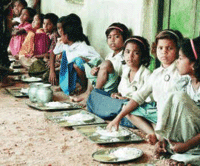 Bnagalore based voluntary organisation Akshaya Patra Foundation (APF) has started the programme in Puri, Orissa. The Orissa Government has decided to put the model of MDM programme in other districts also after the success of programme in Puri. APF is feeding about 2800 school children daily in 190 primary schools of Puri. The State Government has invited APF to partner with it in implementing the MDM programme. Now, Government is providing food to 500 children in Government schools.
Bnagalore based voluntary organisation Akshaya Patra Foundation (APF) has started the programme in Puri, Orissa. The Orissa Government has decided to put the model of MDM programme in other districts also after the success of programme in Puri. APF is feeding about 2800 school children daily in 190 primary schools of Puri. The State Government has invited APF to partner with it in implementing the MDM programme. Now, Government is providing food to 500 children in Government schools.
Kerala to set up higher education council
Kerala government will soon set up a higher education council for addressing the problems that are being faced in the higher education sector.
The information to this effect was provided by State Education Minister M. A. Baby. The minister also disclosed that the government is contemplating of instituting scholarship scheme in the state education to encourage talented and meritorious students.
Kerala plans technical university
A new technical university is to come up in Kerala as part of the government’s attempt to overhaul the educational sector.The proposed university will be the umbrella body for all science and technological institutions in the state. The government also wants to convert 104 government schools as model institutions with the full support of parents, teachers and students.
IIM-A lines up string of foreign tie-ups
Some internationally acclaimed B-schools from around the world will soon tie up with IIM-Ahmedabad for student and faculty exchange programmes, apart from sharing modules and case studies. Among them is Columbia Business School, which will tie up with IIM-A for student exchange programmes and case research. Many international colleges and institutes have been showing interest in collaborating with IIM-A in the last few months.
India’s education budget about three times less than defense
Planning Commission of India announced the increment in allocation of education funds by 2% of India’s GDP which was INR 24,115 crore (6.70 billion US$) whereas the defense budget at the same time was INR 83 crore (19 billion US$).
The defense budget announced for next fiscal year by the Indian Finance Minister P Chidambaram by an increase of 7% stood at INR 89 crore (20.11 billion US$). According to a press report, the Planning Commission of India said fund allocation for the education sector would have to be raised to six percent of the GDP in the 11th Plan from the current four percent.
Rajiv Gandhi Technical University launches website to connect students with administration
The Rajiv Gandhi Technical University (RGTU), India is planning to launch website which will offer students to get in touch with authorities directly. The administration is aiming to establish a better understanding between students and authorities to help students to sort out their problems regarding educational and other matters.
The website will see the students of all parts of the state. The website will help the students to view forth their complains regarding academics and other administrative problems.
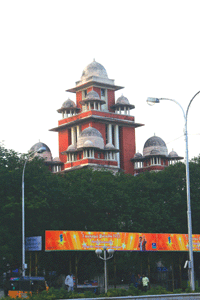 Madras University initiates digital record system for examination
Madras University initiates digital record system for examination
The University of Madras is planning to use digital encoding and encryption of examination answer sheets to prevent cheating.
The university administration is establishing e-Governance initiatives in university campus. . The University administration is talking with HCL technologies to set the modalities. The digital records of all mark
sheets would be stored in future for next 10 years.
i-flex builds DSS for education department of Karnataka, India
i-flex solutions, banking software maker has signed a Memorandum of Understanding (MoU) with the Karnataka (India) State Government to build a Decision Support System (DSS) for the state's education department.
< ?xml:namespace prefix = o ns = "urn:schemas-microsoft-com:office:office" />
i-flex's Center for Business Intelligence (CBI) is developing the DSS in two phases. The company has developed the DSS, which is helping the Karnataka State Quality Assessment Organization (KSQAO), a part of the Department of Education in analysing the quality of education of around 19 Lac children in 41,000 schools, in around 2100 clusters, in around 200 taluks in 32 districts of the State of Karnataka. The Chief Minister of Karnataka, H. D. Kumaraswamy, has launched the 'Karnataka Schools towards Quality Education' programme on the basis of i-flex's DSS. i-flex is also planning to work with the Policy Planning Unit and e-Governance unit of the Education Department, and provide Project Management Support to implement Information Analytics, Data Warehousing and Decision Support System. DSS system shares the information on the assessment with all stakeholders, parents, teachers, communities and political representatives, to enable collective efforts to work towards quality education in the State.

